- How to make a triangle of office paper
- How to make a double triangle of paper
- How to make a modular triangle of paper
- How to make a 3D paper triangle
- How to make a soldier's triangle of paper
- Preparation of basic elements
- Learning to make a vase
- Beautiful swan in origami technique
- Origami from triangular modules: schemes and ideas
The triangle is the simplest and the main figure not only in geometry, but also in the art of origami, because to create masterpieces out of paper, you must first learn how to fold a triangle out of it. We will tell and show you how to make a triangle. different ways and, having mastered them, you can go to more complex handicrafts.
How to make a triangle of office paper
Let's start with the easiest option - we put an isosceles triangle out of paper. To do this you will need paper and scissors.
- Fold the upper corner of the sheet diagonally, apply a fold line, and cut an unnecessary rectangular strip. Expand the part, cut it in half diagonally and in your hands - two triangles.
- Bend the base several times up and down to get smaller figures. If the triangles are made from colored paper, they will come out brighter and it will be more fun to work.
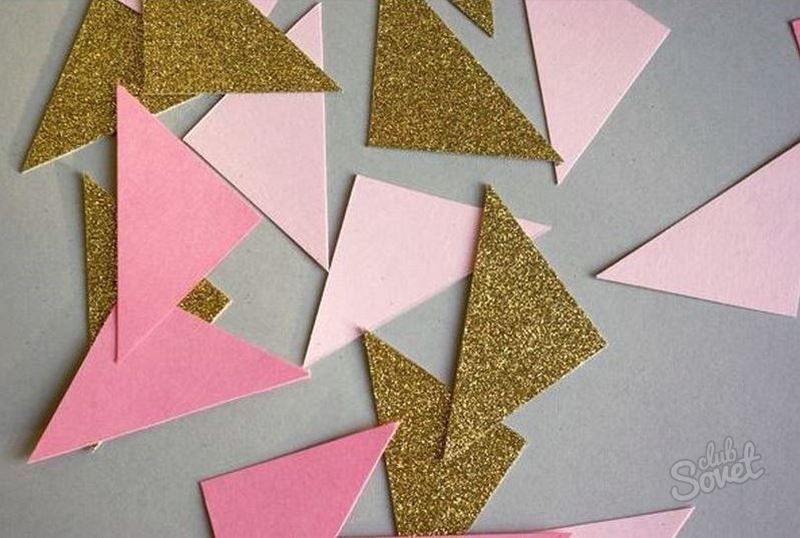
How to make a double triangle of paper
The pair triangle is the simplest form of design in the technique of origami.
- Cut a square out of paper of the desired size, bend and flex it diagonally.
- Fold the workpiece in the middle (horizontal) line.
- Fold in two side triangles, then rotate the shape - and do the same with the next pair of triangles.
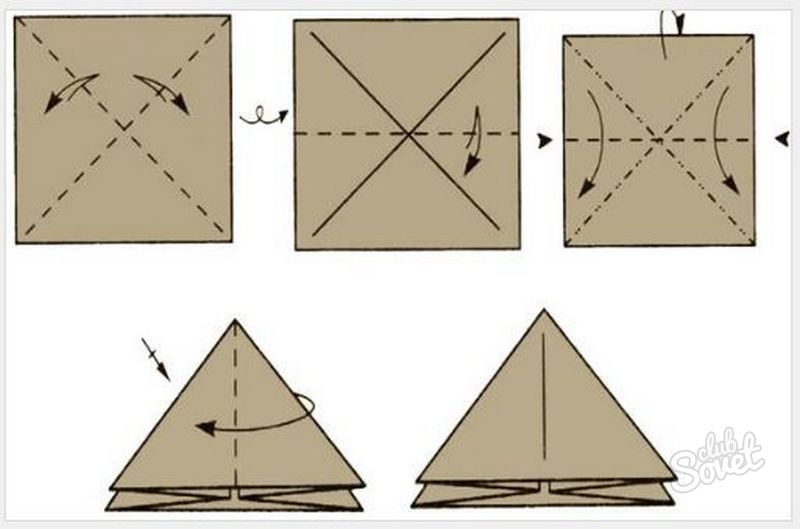
The basic form is " double triangle Ready.
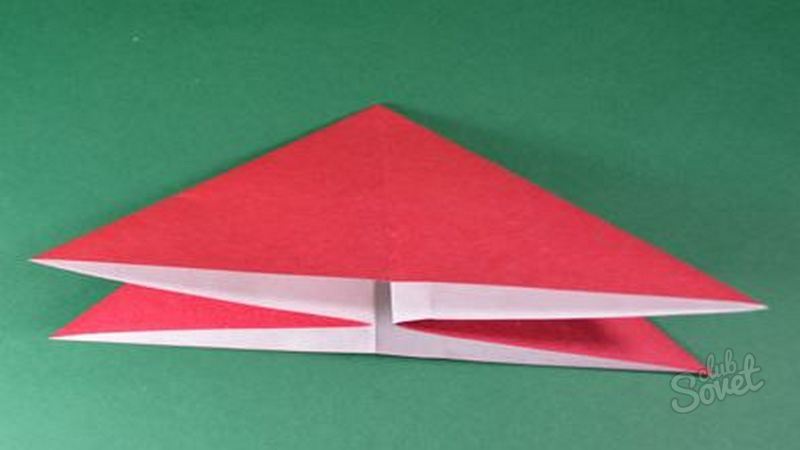
How to make a modular triangle of paper
It is better to learn to collect such triangles on a large sheet of A4 paper, and to design it from small blanks. The aspect ratio of the rectangle for the module is 1: 1.5.
- Fold the sheet horizontally in half, flatten the middle line with your fingers vertically and bend the ends to the central basting.
- Turn the module over and lift the ears upwards.
- Fold the side corners through the main shape.
- Flatten the base, fold the small triangles along the lines, lift the edges up. Bend the base in half.
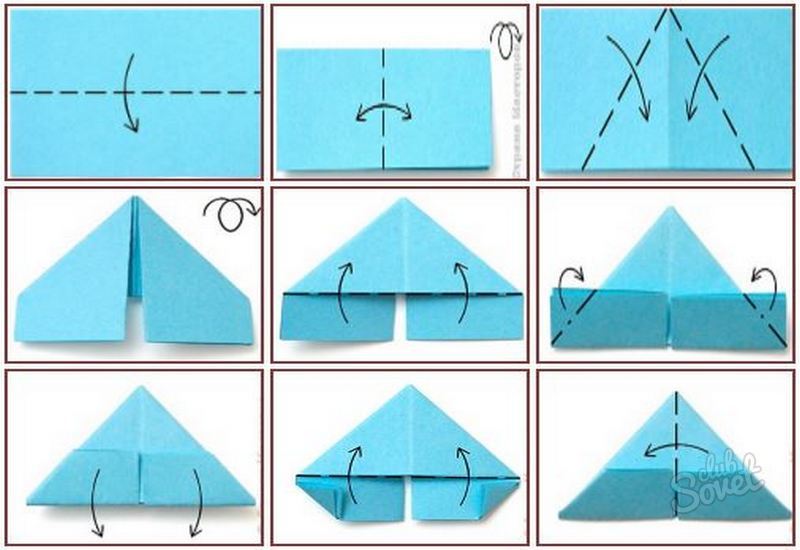
You have turned out modules with two corners and pockets, which can be inserted into each other in certain ways and assembled from them various bulk items.
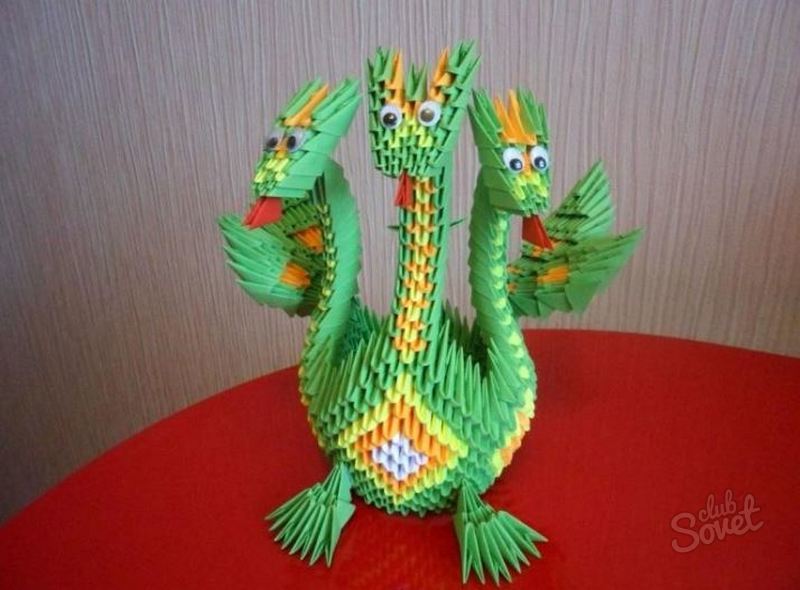
How to make a 3D paper triangle
The pyramid is often called a volumetric triangle, as its side faces are triangles. This figure is made easy, just make the desired pattern:
- draw a square on a sheet of paper, draw an equilateral triangle on each side and make valves for gluing. You can simply download the scan from the Internet;
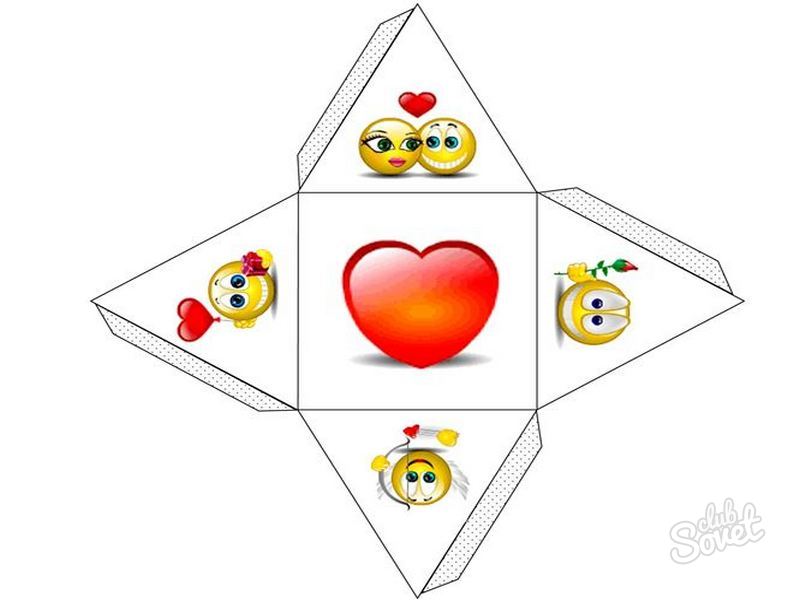
- cut the workpiece, wrinkle along the fold lines and glue along the allowances. After drying, paint the craft or paint it with stickers, emoticons, applications.
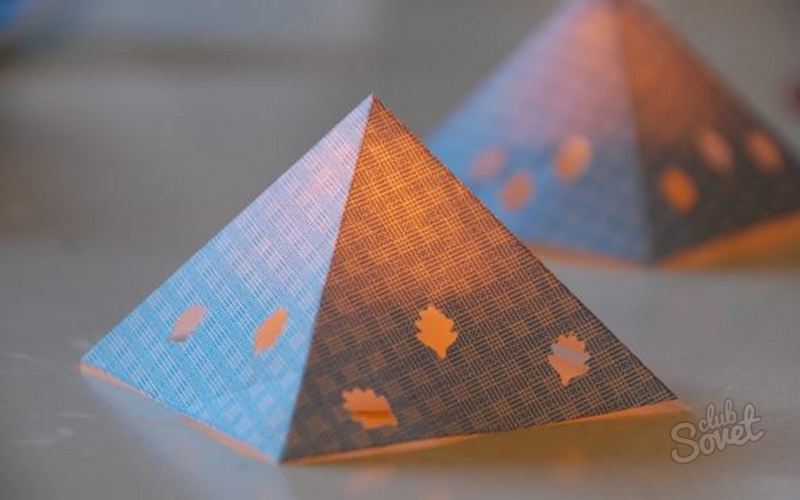
How to make a soldier's triangle of paper
The front letter is done quickly and according to the method of assembly it resembles the origami technique.
- Take the usual notebook sheet, write on it congratulations and wishes to a loved one, then fold the paper according to the scheme - first from right to left, then - vice versa.
- Wrap the remaining strip of paper inside the upper triangle, having previously bent the bottom corners at both ends. Smooth all fold lines to shape the envelope. Sign the recipient's initials on the face of the triangle and give your unusual gift on Victory Day to the dear veteran.
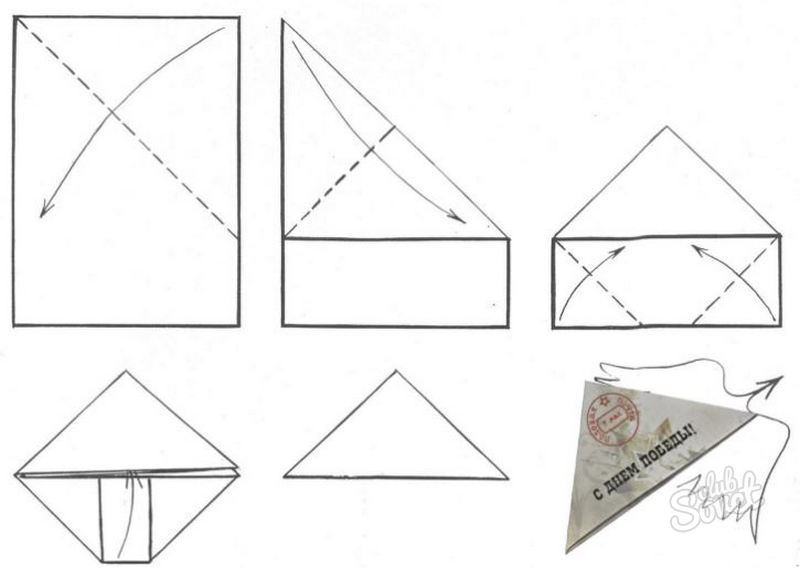
It is not difficult to make a triangle of paper, just read the article carefully, select the desired method of manufacturing and follow our recommendations when working.
is one of the types of modules and is most often used in the modular origami technique.
For the manufacture of a triangular module take a rectangular piece of paper.
You can fold triangular modules out of pieces of paper of different sizes, large and small. The size of the future product depends on it. It is convenient to use for triangular modules leaves 1/16 or 1/32 of a standard A4 sheet.
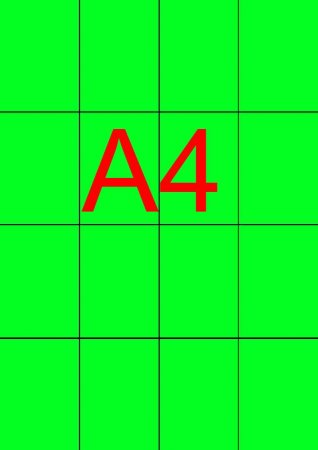
If the sides of an A4 sheet (long and short) are divided into 4 equal parts, and a sheet is cut along the outlined lines, then the rectangles will be about 53 x 74 mm in size.
If the side of an A4 sheet is long divided into 8 equal parts, and a short one into 4, and cut a sheet along the outlined lines, then the rectangles will be approximately 37 x 53 mm in size.
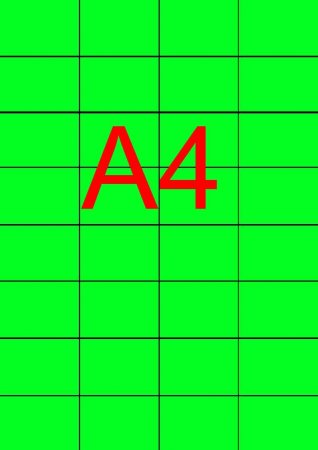
You can choose a different size. Choose for yourself one size of the triangular module for your craft and dwell on it.
The sequence of assembly of the triangular module:
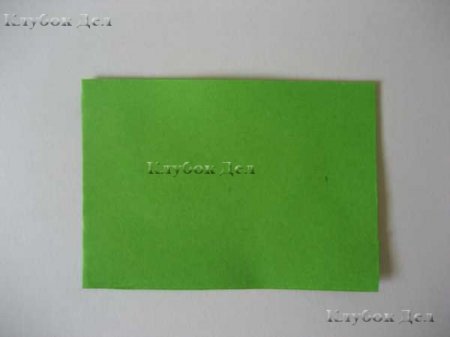
1. Bend a piece of paper in half lengthwise.
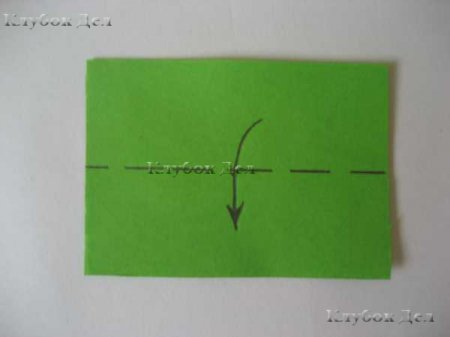
2. To outline the middle line, bend across and straighten. Put the corner up.
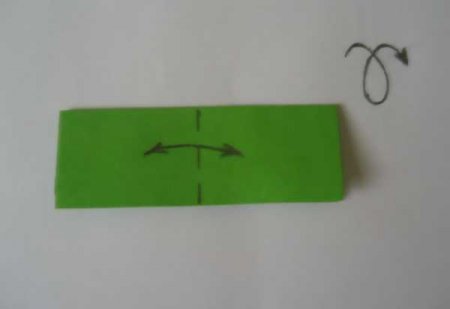
3. Bend the edges to the middle.
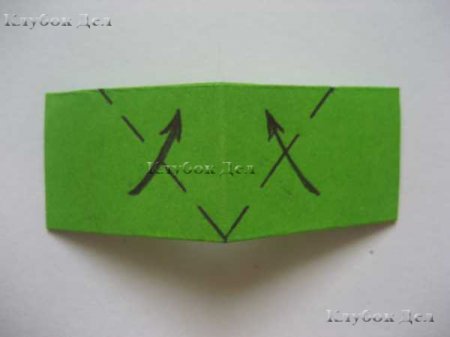
4. Turn the leaf.
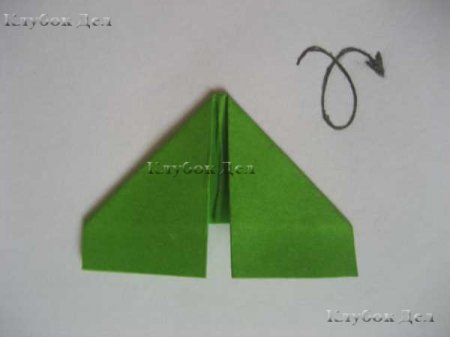
5. Bend the bottom up.
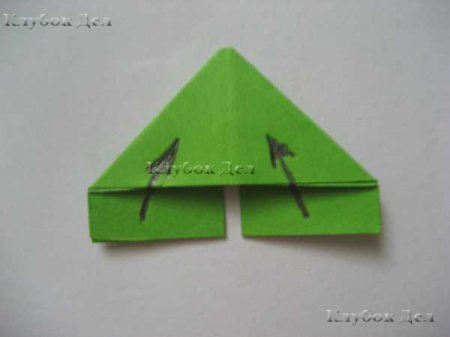
6. Fold the corners, bending them over a large triangle.
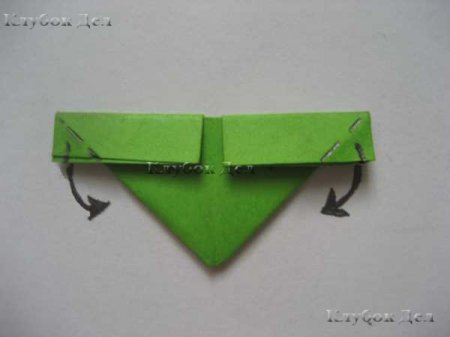
7. Bend the corners and bottom.
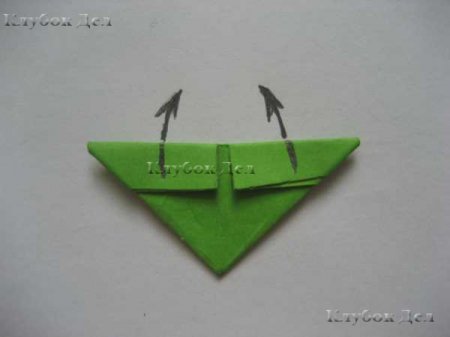
8. Again, fold the corners along the marked lines and lift the bottom part upwards.
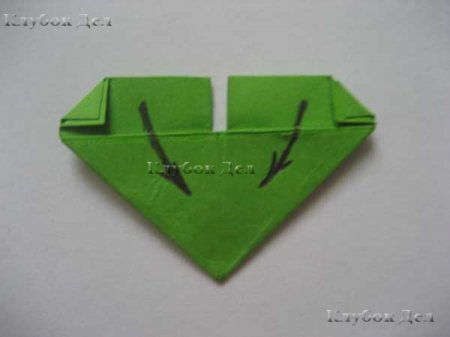
9. Fold in half.
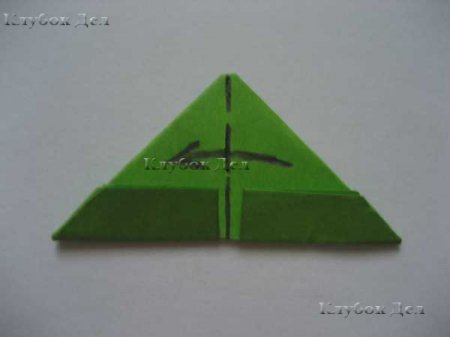
The module has two pockets and two lower corners. Modules made in this way are easily inserted into each other and you can get volumetric figures as a result.
Modular origami is the most difficult section in this art of paper crafts. But the appearance of what is performed in this technique easily covers all the difficulties associated with it. There are many schemes for beginners, where you can hone your skills.
Preparation of basic elements
In modular origami, the main difficulty is not so much the process of adding together the individual elements and their subsequent arrangement, as the need to make a large number of parts. Even on a small crafts more than 100 triangles go, and in large compositions the score goes to 1000. Therefore, it is highly recommended for beginners to practice adding the base modules before starting to make a large batch of them for a specific piece.
Paper for modular origami can be used almost any: from color to newsprint, magazine, etc. The main requirement for it is flexibility. The sheet should easily fold and hold the resulting shape, so too dense do not fit. Their size is chosen arbitrarily, where it is more important to maintain the aspect ratio of 1: 1.5. The most commonly used rectangles are 53 by 74 and 37 by 53 mm. If there is no experience in working with triangular modules, it is better to take a larger size: otherwise it may be difficult at the final stages of adding up the details.
The production scheme of the base element will not cause difficulties even for a child. The rectangle is located horizontally, after which it is bent in half along the longitudinal line. The next step is to mark the middle line, for which the paper is bent along the vertical axis and unbend back. For the best effect, you can repeat the bend by holding the back of the scissors blade over it.
Now the edges of the rectangle are bent inwards and downwards, along diagonals extending from the top of the intended axis. After the addition of the edge must touch each other with their outer sides, and the resulting figure will resemble a triangle planted on a rectangle.
Then the figure turns around with the seamy side, the outer corners of the parts looking out from under the triangle are bent inwards and upwards along the diagonal. They must lie down so that they do not overlap the base of the triangle, but are aligned with it. Then, along the line of this base, the entire lower part, peeking out from under the triangle, bends upward, laying on it.
And at the final stage, the module is planned according to the vertical axis outlined at the very beginning of the vertical axis. In finished form, he has sharp corners and "pockets" on the outside, near the bend.
Learning to make a vase
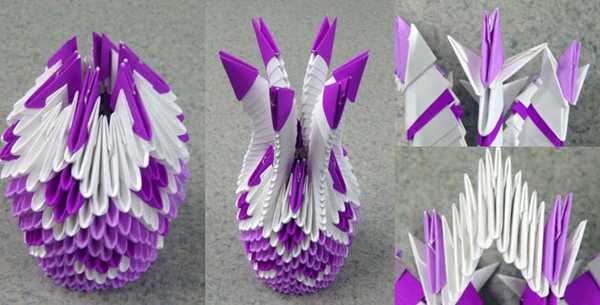
- Beginners are encouraged to try their hand at the most simple crafts: for example, vases of triangular modules. Often, the overall shape of the product does not undergo any special changes, and the main factor for varying its appearance is the pattern, which is laid out with modules of different colors. The low sculpture accounts for about 1,220 elements, which will be approximately 32 rows in height and 48-50 modules for the widest part. Calculate a specific number of parts can be, if you pre-make a sketch of a vase pattern. For example, perform the 4 lower rows in a single color, and add diamonds for the next 5, whose width and height will be identical - 3 modules each. It is possible to add a frame to them, and also to begin to spread them not from the 5th row, but from the 1st.
- To lay the foundation, 48-50 modules are connected in a circle. This happens as follows: 2 triangles are placed next to each other, their lateral sides are mirrored, and adjacent angles are inserted into the “pockets” of the 3rd triangle. According to this scheme, all elements are connected, and the resulting chain closes at the right moment. The row that will be placed on it is created by instructing new modules on the lower ones; in the case of a vase, it is necessary to move the parts out slightly to gradually expand the shape of the product. When you need to go to the narrowing, the modules, on the contrary, will wind up slightly inside. In total, 18-20 rows are needed on the pot-bellied base of the vase, after which the neck can be removed.
- Since this part of the vase is supposed to be narrower, the number of modules in the ring is reduced by 2 times, and therefore a new circle is laid. In height will be 13-14 rows, which are laid out already through the narrowing and expansion to the top. Kayma can be issued separately, for example, putting the modules on its side and fixing it with glue. The neck itself is also required to be put on the glue, since it will not be possible to fasten it with a classic putting the modules on each other.
- If you want to get a more original shape of the product, you can modify the neck and even fix it immediately on the base of the vase. To do this, every 7 elements on the last top row are put on the modules, positioning so that there is no shift either in or out. These tops need to be repeated 2 times, putting them on the module. The result will be 6 protrusions that already have 3 single rows. They should be extended to the desired height, not forgetting to display a concave shape. Depending on the size of the vase, the number of modules mounted on each other will be calculated.
- At the final stage, a border is created, connecting the disconnected neck lines into a single neck. A corner of the new module is inserted into each upper triangle from under the bottom, so that the free corners go to the sides. The sides of additional parts will be attached to them, and from above they will be fixed with the triangles which are put on them. So stretch the "bridges", which form the hem of the neck of the vase. If you wish, you can add 1 more row of modules on them, securing the result and increasing the width of the finish.
Beautiful swan in origami technique
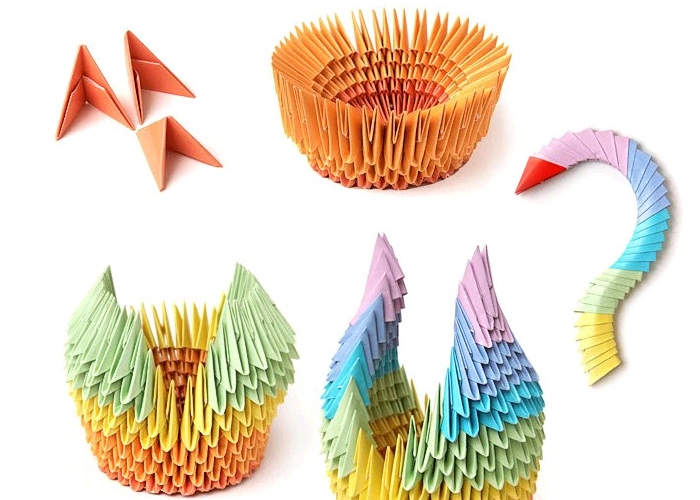
Those who have mastered the basic scheme of the vase can try a more complex sculpture - the swan. It takes about 700 modules, whose number varies depending on the height of crafts. The row, which is the base, contains 32 modules assembled in a ring. The next 6 rows line up with the tendency to expand, but the number of elements remains unchanged.
A new stage - a smooth transition to the swan neck, which will take only 2 modules in width: this zone does not need to be touched, continuing to spread up the rows. From it in both directions it is necessary to start up 13 modules, which will become the bases of the wings. Their height will be 13 rows, each of which in width will decrease by exactly 1 module to the left and to the right. Thus, the wings to their top narrow as much as possible, and it is advisable not to forget to create a natural bend to them, shifting the parts in and out.
From the side opposite to the head zone, the tail is lined up with the same narrowing up: since only 4 modules are given to it, the height will be equal to the same figure and it will be short. Swan neck can have any height, because it does not change the width.
Origami from triangular modules: schemes and ideas
If you can already easily make more than 1 thousand modules, and simple creation of a narrowing and expanding ring series of difficulties does not deliver, the immense field of activity opens up before you. Schemes for modular origami invented a lot. Those parts that cannot be connected by simply inserting the elements into each other are fixed by means of a glue gun. The rest of the difficulties with the work there.
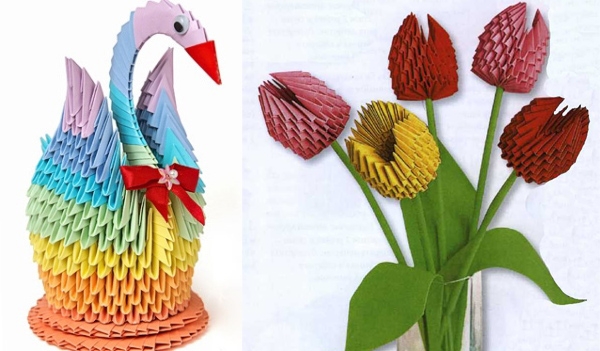
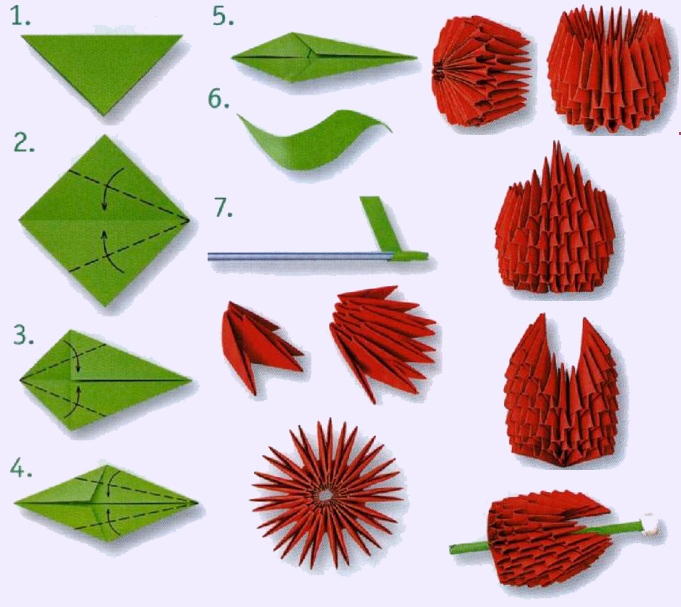
Charming tulips will be worthy of filling for the vases of modules discussed above: the heads of the flower consist of 7 rows of 14 elements each, and 2 petals are narrowed over another 4 rows. The stem and leaf are created from ordinary colored paper using the technique of classical origami.
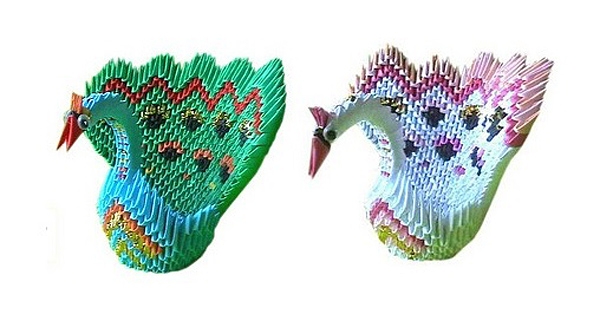
By analogy with a vase and a swan, luxurious peacocks are created, in which, after 6 uniform rows, 34 modules on the 7th 10 are separated to constrict into the chest and neck, and the remaining 24 gradually expand upwards, forming a fluffy and colorful tail.





